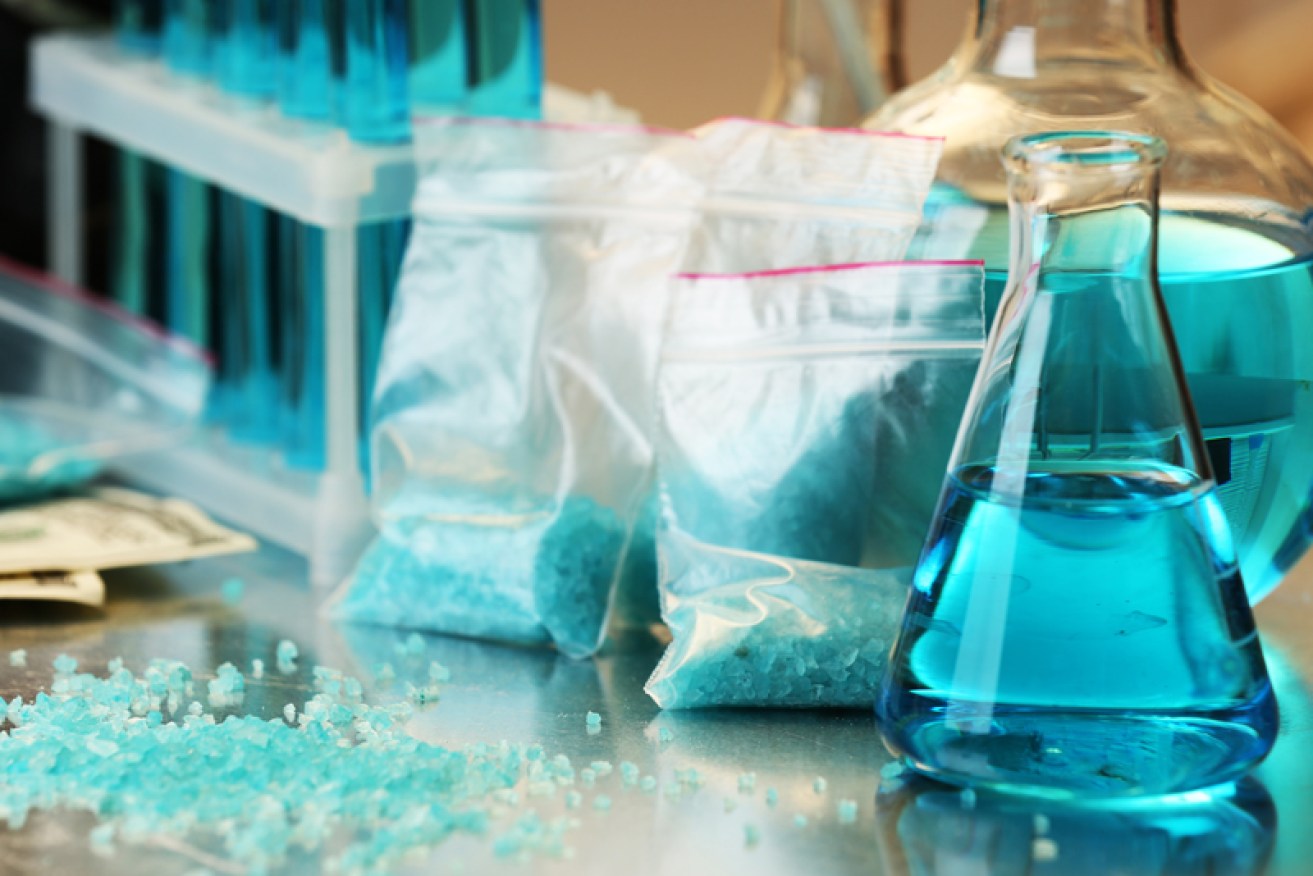Ice use pushing up crime rates, Criminology Institute says

A report showing record levels of amphetamine use among people in police custody is proof that ice is driving crime rates higher, the Australian Institute of Criminology says.
Drug Use Monitoring in Australia (DUMA) is funded by the Federal Government and has been tracking men and women in police custody since 1999.
• Poll threatens Tony Abbott, govt
• ‘Evil and pernicious’: PM announces ice taskforce
• ‘Drug addicts need recovery, not jail’: expert
Its latest report shows 37 per cent of adult detainees tested positive to amphetamines — the highest in DUMA’s history, and a 13 per cent jump since 2011–12.
Institute director Chris Dawson said the increased use of ice in Australia was reflected in crime rates and also disproportionate to that in other Western nations.
Key points
- 37 per cent of adult detainees nationwide tested positive to amphetamines
- Increase in ice use is disproportionate to increases in other Western countries
- Kings Cross, in central Sydney, shows highest figures
- Half of those who test positive have been charged in the previous 12 months
“We’re still not exactly certain why it’s becoming the most prevalent of the illicit drugs, but certainly the harms that are attached to it — increased psychosis, memory loss, aggression — give rise to very serious crimes,” he said.
“We are not the only country in the world with this problem but we are seeing a disproportionate increase in use compared with other Western countries.”
Mr Dawson said that was despite the fact that ice cost more here than in most other nations.
“The cost of ice per gram in China is $100; by the time it hits Australia, it’s about $650,” he said.
Results show national ice strategy important: Dawson
DUMA collected urine samples, provided voluntarily from people in custody in six areas: Kings Cross, Surry Hills and Bankstown in Sydney, and three other sites in East Perth, Brisbane and Adelaide.
Kings Cross had the highest rate — 61 per cent of adults in police custody had amphetamines in their system, followed by 43 per cent in Surry Hills.
In police custody, on amphetamines
- Kings Cross, NSW — 61 per cent
- Surry Hills, NSW — 43 per cent
- East Perth, WA — 39 per cent
- Brisbane, QLD — 38 per cent
- Adelaide, SA — 27 per cent
- Bankstown, NSW — 26 per cent
“These figures highlight why it’s critically important that the Federal Government has brought forward its national ice taskforce,” Mr Dawson said.
“Emerging from that will be a national ice strategy by the end of this year going to the Council of Australian Governments [meeting].
“Now, that’s very important, because all of the communities, whether it be Kings Cross or the smaller communities, are very concerned about the visible impact and the tragedies that have been brought to bear by this drug.”
Mr Dawson said almost half of those who tested positive to amphetamines had been charged with a crime in the previous 12 months.
“These are not first-up offenders, these are people who are being detained for the courts who are — almost half of them have been — subject to charges before,” he said.
“There’s an increased prevalence in the use of drugs among offenders.”
Cannabis tops list of most common drug
Mr Dawson said ice did not discriminate, with addicts from all walks of life.
“We are finding it across a broad range of people — it runs across all levels of society,” Mr Dawson said.
“We’re not seeing it as a drug that’s only used by people from the lower-socio [economic] demographics.”
The latest results are based on samples from almost 3,500 people.
The most common drug detected among people who have been arrested is still cannabis — 46 per cent of all detainees who provided samples in the past year tested positive for the drug.
Heroin, MDMA, cocaine and benzodiazepines, such as tranquilisers, have remained relatively stable in the past few years.
DUMA does not test for alcohol among people in police custody, but it does survey offenders.
Just over 40 per cent of adults in custody reported having consumed alcohol in the 48 hours leading up to their arrest, with the average drinking session involving 19 standard drinks, and as many as 31 for some.
“Obviously, ice is not the only drug that’s driving crime rates — alcohol continues to be a major problem,” Mr Dawson said.








